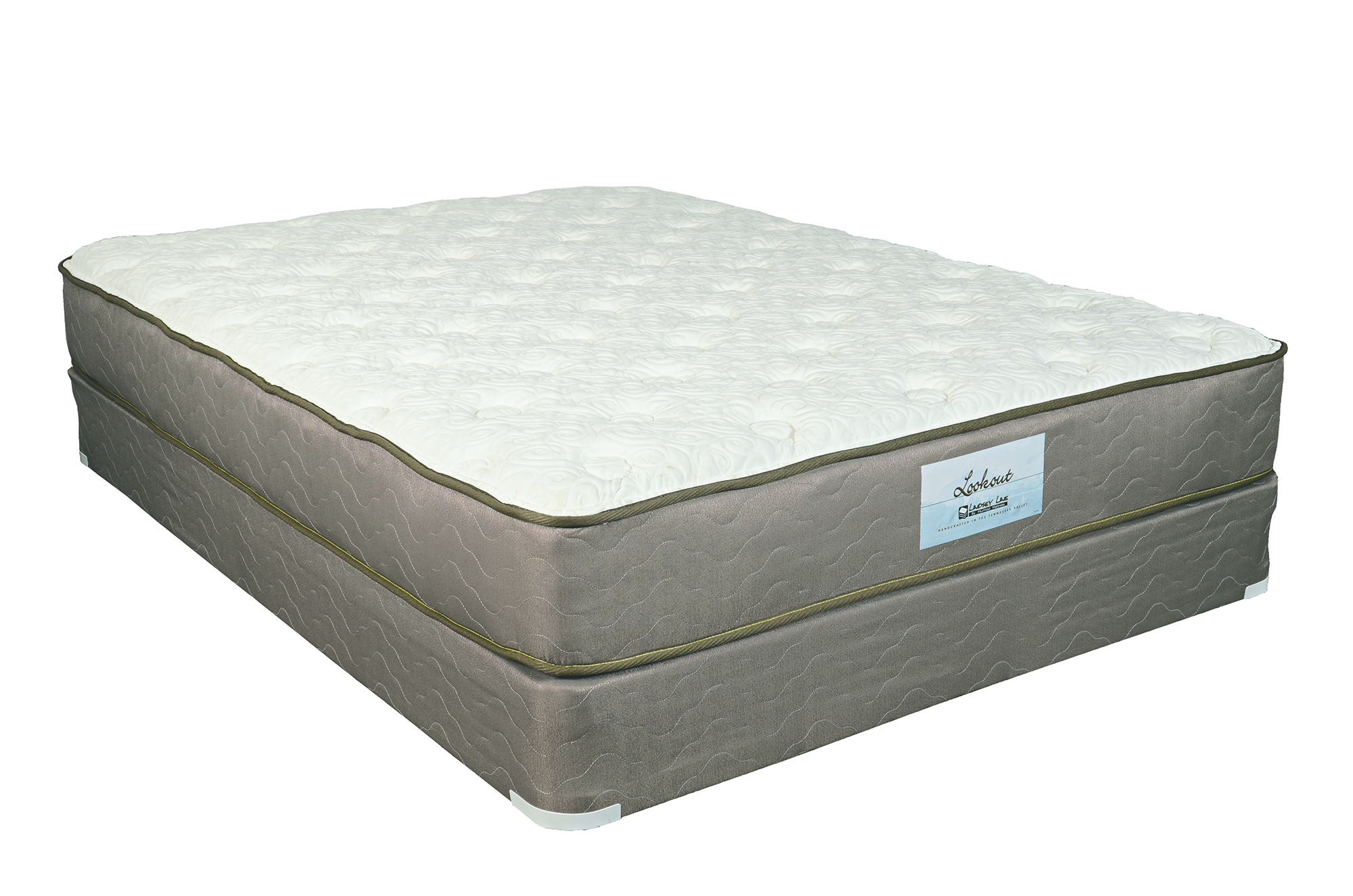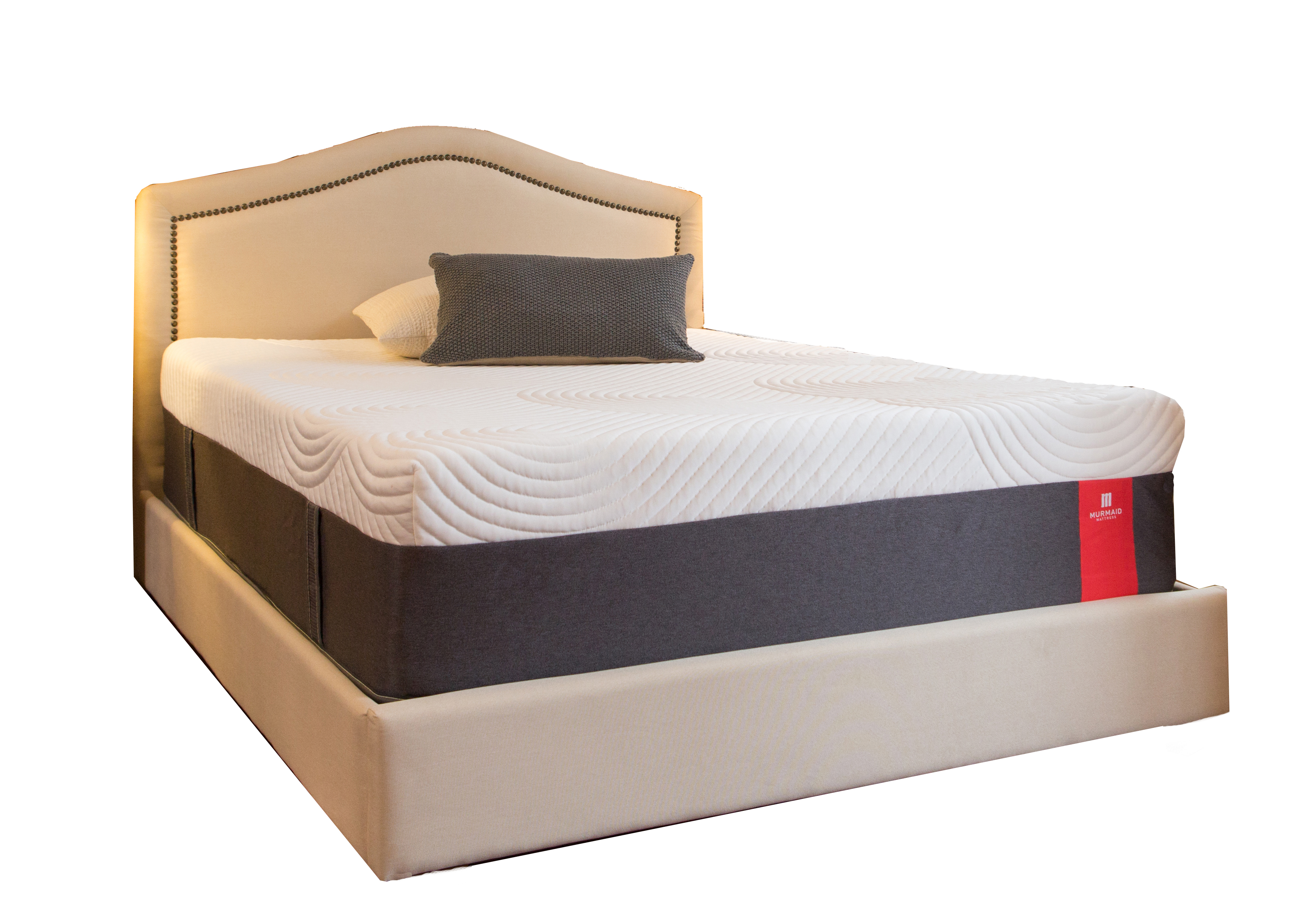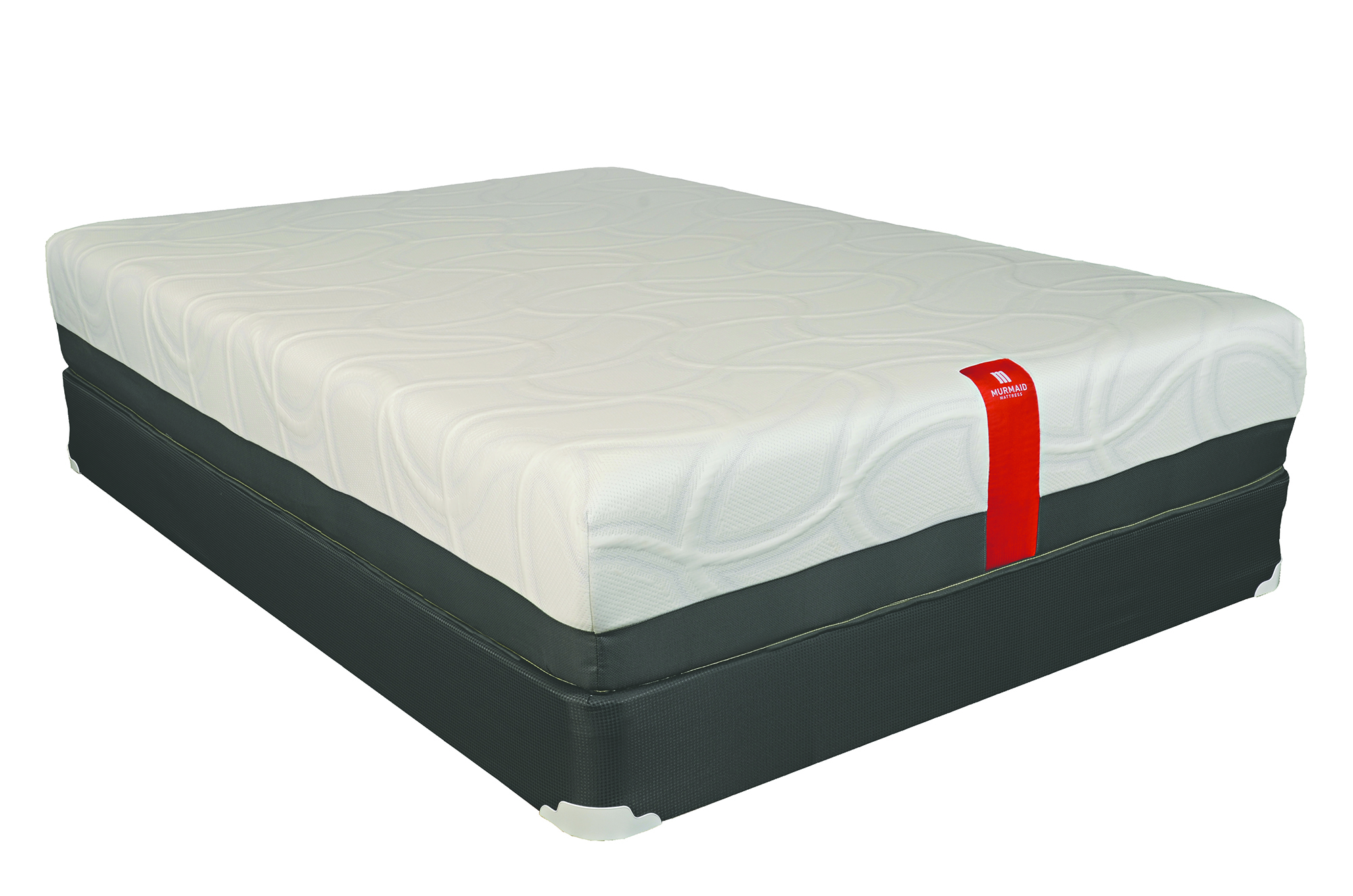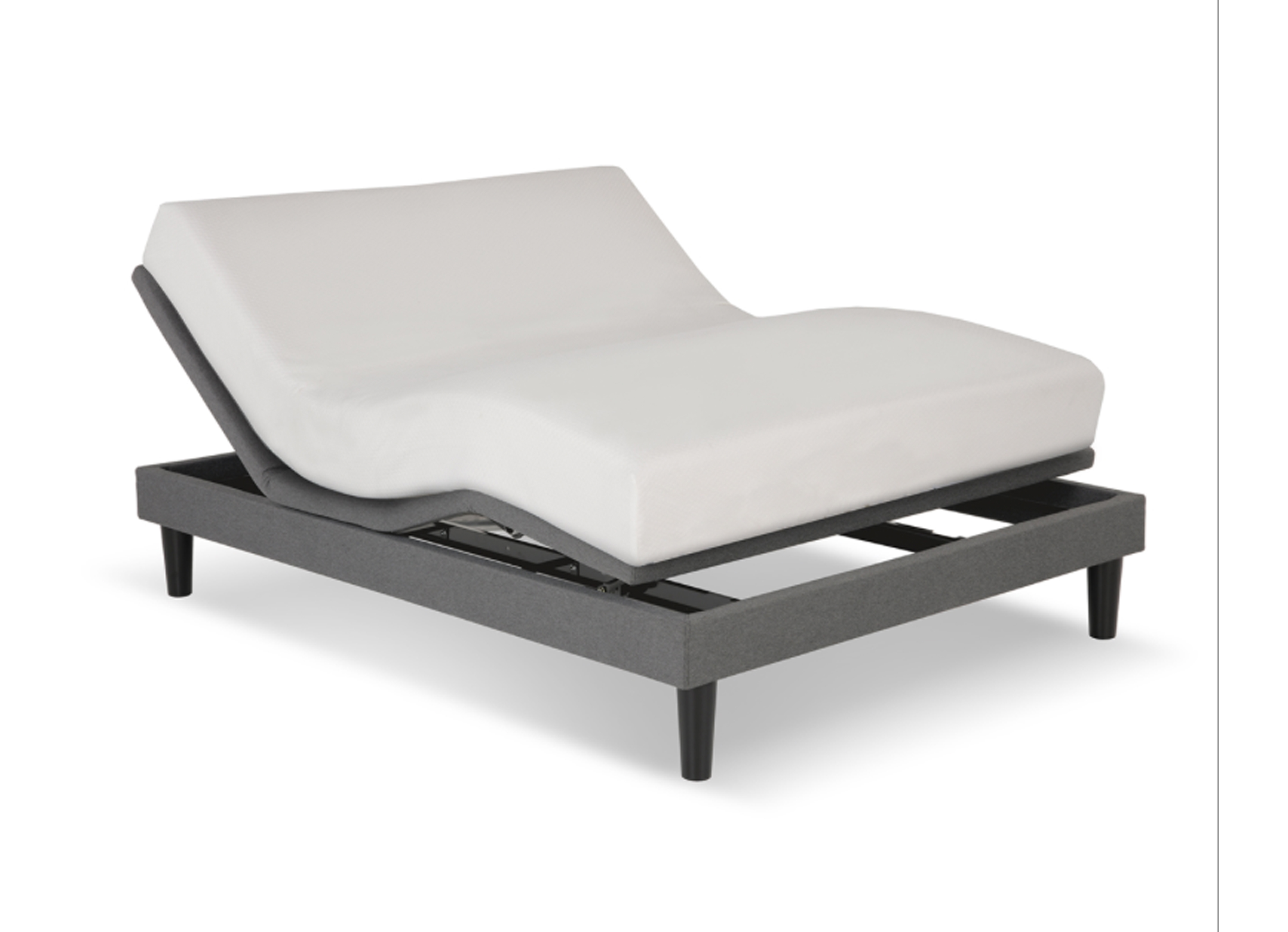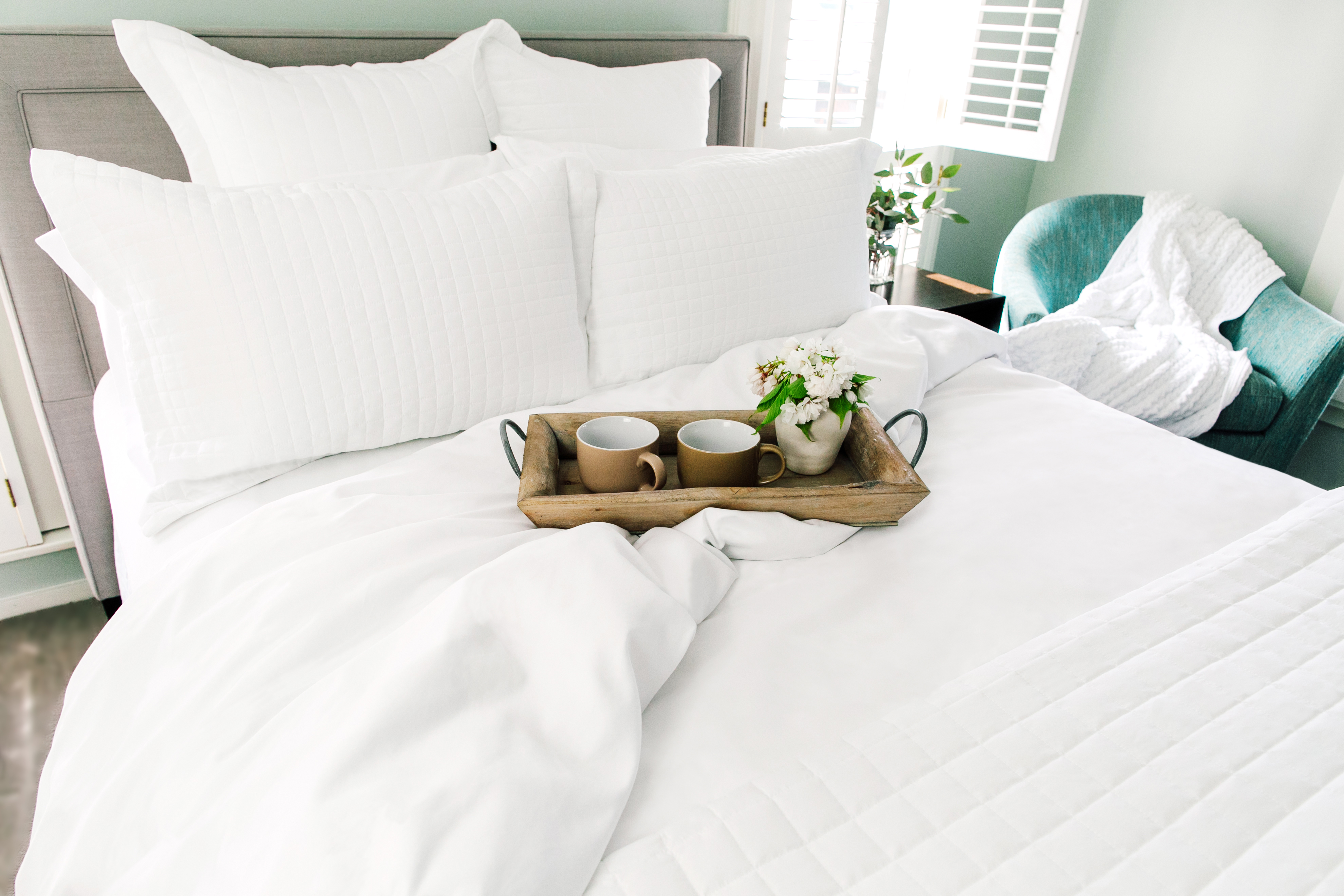Scroll through the pages (and pages and pages) of The Dwell's reviews and you'll notice a common theme. Locals know the boutique hotel for its eye-popping midcentury modern décor and the creative cocktails and eclectic menu of Matilda Midnight and Solarium Cafe, the on-site bar and restaurant. Of course there are glowing remarks related to those hallmarks, but those who have had the occasion to spend a night there also note something much more pragmatic: the beds.
"Next to our staff, the bedding is probably the biggest compliment we get," says General Manager L'Erin Chidester. "We get a lot of business travelers and they say it's the best night's sleep that they've had."
The Better Sleep Council suggests that if you sleep better at a hotel or a friend's house than you do in your own bed, it's time to change up your mattress - which means Roger Pickett has been busy. As president and owner of local retailer MurMaid Mattress Inc., he says he's sent beds to people around the country following "the best sleep of their life" at The Dwell. So far, the list includes a record producer in New York City, a family in Texas, and that family's neighbors after they came over to see for themselves what exactly had led to the delivery of five of the same bed. With MurMaid's signature iCool mattresses now tucked into guest rooms at The Edwin as well, it's likely he won't be getting much rest from requests.
So, how can one achieve the best sleep of their life without holing up in a hotel? While Pickett says there's no one-size-fits-all when it comes to comfort, he and some other local pros weighed in on the important features to look for in a bed.
THE MATTRESS
"We spend about one-third of our life in our bed, so it is very, very important," says Monica Smith, a chiropractor with REV Centre for Optimal Living. A bad night's sleep doesn't just mean more coffee for you and psychological warfare for those around you; it can have serious health implications. According to the Better Sleep Council, you can survive without food for two weeks; sleep, 10 days. And even just a missed hour here and there can add up. "After several nights of losing sleep - even a loss of just 1-2 hours per night - your ability to function suffers as if you haven't slept at all for a day or two," the council's website states, which means key functions, like the repair of your heart and blood vessels and the shoring up of your immune system, are compromised.
When it comes to picking a mattress for these integral bedtime routines, Pickett says it used to be an easy choice: firm or soft. These days, however, manufacturers have "almost made it too complicated." New technology means mattresses are now relegated by their makeup. There's the innerspring kind you grew up on, the memory foam varieties that are sweeping the market, and a hybrid of the two offering individually wrapped coils topped with memory foam. While each has selling points, Pickett says the decision really still comes down to comfort, e.g. those basic two options of old. Following the age of pillowtops, the trend is now toward firmer mattresses, he says. "I tell people to pick the perfect one in the showroom and then go one degree firmer," he adds. "It's gonna settle." While Pickett believes a trip to the showroom to test drive several mattresses is crucial to your ultimate comfort, he offers these product recommendations:
FIRM(ER): L&K 100
Pickett says the Lookout Firm is probably MurMaid's most popular firm mattress, but he prefers the L&K 100 for its upgraded gel memory foam, which provides more contoured support and helps disperse body heat.
Lookout Firm:
» $449.96 (queen)
» 682 individually pocketed steel coils (tempered with heat and electricity)
» Caliber edge technology, meaning the mattress is trimmed with smaller, firmer springs for edge-to-edge support and added flexibility on adjustable beds
» Heavy-duty insulator pad
» 1-inch medium firm foam
» 1.5-inch super-soft quilted cover
L&K 100:
» $1,299.96 (queen)
» 896 individually pocketed steel coils (tempered with heat and electricity)
» Quantum edge technology, meaning the mattress is trimmed with smaller, firmer springs for edge-to-edge support and added flexibility on adjustable beds
» 1.5-inch high-density extra-firm support foam under the spring
» 3-inch memory gel
» Premium smooth top cover
PLUSH(ER): iCool 12-inch
A favorite in Pickett's household - and at The Dwell - the all-foam iCool line is essentially MurMaid's version of the Tempur-Pedic. And when it comes to such memory foam mattresses (and MurMaid's 365-day exchange option), "at most 10 percent [of purchasers] maybe exchange, but 90 percent love it," he says. Compare that with the 60 percent of purchasers of innerspring mattresses that the Better Sleep Council reports are satisfied with their nighttime partner.
iCool 12-inch:
» $1,799.96 (queen)
» 1.5-inch high-density extra-firm support foam
» 6.5-inch furniture grade foam core
» 3-inch high-density foam encasement around the foam core
» 4 inches memory gel
» Temperature regulating fabric
PRO TIP: With memory foam, the heavier the mattress is, the better (aside from that move into the house, of course). It signals the density of the foam, and less air means less settling over time, Pickett explains. "A good piece of foam costs twice as much as a cheap piece," he says. "You can make a comfortable cheap mattress, it's just not gonna last as long."
THE PILLOW
While Smith shies away from giving a formal mattress recommendation - aside from keeping it organic to avoid the toxins used in most manufacturing - she does offer a specific option when it comes to the pillow: none.
"When we lay flat on our back, it allows our spinal cord to decompress and go through somatic waves, processing and integrating the prior day," she explains. "This is pivotal and paramount for not only spinal health, but overall health and well-being."
Whether you suffered whiplash in a fender-bender or the daily game of mental ping-pong you play at your desk, that stress will stick with you unless you help your body process it, she says. To better allow for this, she recommends sleeping on your back as opposed to your side or stomach, which puts pressure on your spine, muscles and joints.
"People come into our office for a variety of reasons - neck and back pain, chronic diseases, anxiety, depression, addictions, etc. - but it all comes down to the same cause: stored stresses in their body causing symptoms, sickness and disease," says Smith. "Our nervous system is the master control system of the body and is the filter from the outside world to our inside world (body). When the nervous system is overloaded with unprocessed stresses, it cannot function the way it's intended to. As a result, the body develops certain symptoms and, eventually, sickness and disease."
For the cumulative 69 percent of people who do prefer to sleep on their side, whether in the fetal, "log," or "yearner" position, she recommends using a soft pillow under your head and a pillow between your knees to help keep your spine in a linear position.
SPLURGE ON THIS:
AN ORGANIC MATTRESS?
Manufacturers are required to create mattresses that meet high flame-retardant guidelines, but they aren't required to tell you what, exactly, makes the bed able to withstand a blaze. Pentabde is now linked to a host of health concerns, but it was a popular flame retardant in furniture until it was phased out in 2004. Its replacement isn't the only concern. Formaldehyde is commonly found in the adhesives used to make a mattress, as another example.
Just like with food, a growing number of people are turning to organic for their mattress for both environmental and personal health reasons, but, just like with food, such labels can be deceiving. If you go this route, beware of hype words like "eco-friendly" and "green."
There are several formal certifications, but it's best to look for a mattress labeled Global Organic Textile Standard (GOTS) or Global Organic Latex Standard (GOLS), which both ensure that at least 95 percent of the materials are certified organic and certain restrictions are placed on the other 5 percent. Other certifications may only apply to certain parts of the mattress or safeguard against specific chemicals. And be sure the certification is current.
THE SHEETS
If the thought of your laundry pile makes you cringe, just think about people like Deidre Thompson, an esthetician and business administrator at Larimar Medspa, where beds are stripped for laundering practically every hour. So it makes sense that spa operators would have you covered when it comes to recommendations for durable yet comfortable sheets. The bottom line? Make them microfiber. The material is touted for its luxurious, some might say spa-like, softness, as well as its quick drying and resistance to wrinkles. Both Thompson and McKenna Lamons, general manager of The Woodhouse Day Spa, say clients constantly ask what kind of sheets they use, and many of the staff are converts now as well.
"So many factors are important in creating an ambiance that caters to all of the senses of the body," Thompson says. "Lighting, music, aromatherapy, and even the sheets, as they play an important part with our sense of touch."
» Comphy sheets, used at Larimar and The Dwell, have the added benefits of protecting against allergens and being treated for stain release: $146 (queen)
» Sposh sheets, used at Woodhouse: $129 (queen)
BRING THE AMBIANCE OF A SPA TO YOUR HOME
The spa isn't the only place where your relaxation benefits from the ambiance. Smith recommends bringing some of that setting home for a better night's sleep. Here are her tips:
» Your bedroom needs to be completely dark at night as this will help the pineal gland release the optimal amount of melatonin for sleep regulation.
» Keep your house temperature low. "We do 65/66 (degrees)," she says.
» Absolutely no electronics in the bedroom, because the blue light interferes with hormone production, i.e. sleep.
» No caffeine at least 6 hours before bed.
» Develop a bedtime routine. Bathing before bed also allows for better sleep as it drops the body temperature low, says Smith.

